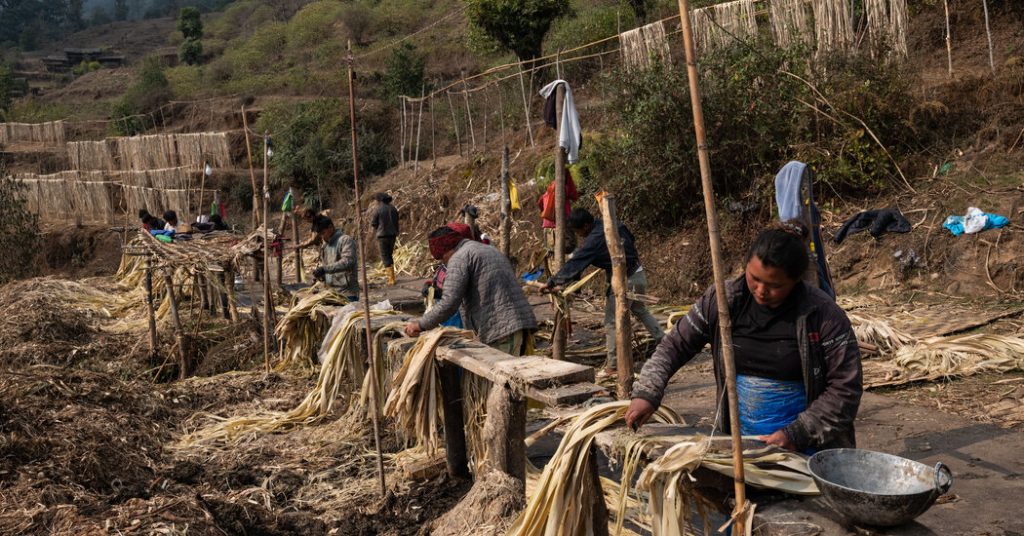In eastern Nepal, between the Himalayan Mountains and the tea estates of India’s Darjeeling district, a local farmer named Pasang Sherpa found new success by cultivating argeli, an evergreen shrub that was previously used for fencing or firewood. This unusual trade has emerged as one of the poorest regions of Asia supplies a primary ingredient for Japan’s currency. Japan’s supply of mitsumata, the traditional paper used to print banknotes, was in decline, leading a Japanese company called Kanpou Incorporated to seek out alternative sources in the Himalayas. The bark of the argeli plant, a hardier relative of mitsumata, was discovered to be an ideal raw material for Japanese banknotes.
Under the guidance of Japanese specialists, Nepali farmers like Pasang Sherpa learned to harvest argeli bark and process it according to Japan’s exacting standards. The process involved steaming off the bark, stripping, beating, stretching, and drying it before it was ready to be shipped to Japan. This new venture allowed Mr. Sherpa to hire local labor and increase his earnings significantly, moving from growing corn and potato crops to producing argeli bark for export to Japan. He expects to earn $60,000 in profit this year, a substantial amount in a country where the average annual income is $1,340.
The partnership between Nepali farmers and Kanpou Incorporated has not only benefitted individuals like Pasang Sherpa but has also had a broader impact on the economy and migration patterns in Nepal. For many farmers, the opportunity to produce mitsumata for Japanese banknotes has provided a viable alternative to traditional agriculture or seeking work abroad. This new source of income has helped individuals like Faud Bahadur Khadka, who previously worked in the Gulf as a cleaner but found more success and satisfaction as an argeli farmer.
Japan’s attachment to physical currency, particularly the distinct design and quality of its banknotes, makes it an anomaly in an increasingly cashless region. Despite the trend towards digital payments, Japan’s demand for physical currency remains high, with the upcoming redesign of their banknotes signifying the importance of maintaining the production of yen notes. The relationship between Nepali farmers and Japanese currency production reflects a symbiotic partnership that has economic, social, and cultural implications for both countries.
The production and export of argeli bark from Nepal to Japan have become a significant source of income and employment for farmers in the region. By supplying the raw materials for Japan’s banknotes, Nepali farmers have found a sustainable and profitable livelihood that has the potential to reduce migration to other countries for work. As Japan prepares to release its new banknotes, the role of Nepali farmers in the currency’s production is underscored, highlighting the importance of sustainable and mutually beneficial partnerships between countries with diverse economic backgrounds.
The success of the collaboration between Nepali farmers and Kanpou Incorporated underscores the potential for economic development and innovation in regions facing challenges like rural depopulation and climate change. By identifying and utilizing local resources like the argeli shrub for the production of banknote paper, both Nepal and Japan have found a unique way to address economic needs while also preserving cultural and environmental heritage. The story of Pasang Sherpa and his fellow farmers in the Himalayan foothills exemplifies the transformative power of sustainable agriculture and cross-border partnerships in creating shared prosperity and opportunities for communities facing economic uncertainty.


